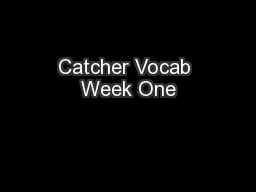PPT-SAT VOCAB TWO
Author : olivia-moreira | Published Date : 2017-07-03
Audible adj able to be heard Oscillate v to sway from one side to another Dissonance n lack or harmony or consistency Undulate v to move in waves SAT VOCAB
Presentation Embed Code
Download Presentation
Download Presentation The PPT/PDF document "SAT VOCAB TWO" is the property of its rightful owner. Permission is granted to download and print the materials on this website for personal, non-commercial use only, and to display it on your personal computer provided you do not modify the materials and that you retain all copyright notices contained in the materials. By downloading content from our website, you accept the terms of this agreement.
SAT VOCAB TWO: Transcript
Download Rules Of Document
"SAT VOCAB TWO"The content belongs to its owner. You may download and print it for personal use, without modification, and keep all copyright notices. By downloading, you agree to these terms.
Related Documents














